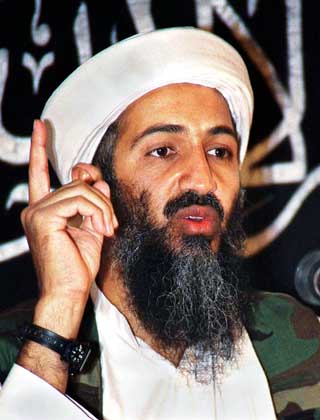Just like the United States, India too has a host of enemies who have taken shelter or been given sanctuary deep inside Pakistan. So how likely is it that New Delhi could pull off a daring commando assault against them? A chorus of Indian voices (here and here) is asking precisely this question. The chief of the Indian air force, responds, somewhat cryptically, in the affirmative. One might note that the country recently took receipt of six C-130 HERCULES transport aircraft outfitted for special-forces operations, and that there is no doubt that the air force has the wherewithal to strike terrorist camps located in the Pakistani portion of Kashmir. India also maintains a well-regarded naval commando unit.
But does the Indian military possess the capacity for audacious direct raids on high-profile terrorist targets located further away from its home turf? The short answer is no.
A series of technical, operational and political constraints all but rule out such an operation. First, the Indian capacity for sophisticated, multi-dimensional (combining on-the-ground operatives, satellite reconnaissance and communications intercepts) tracking of terrorism suspects is virtually non-existent. As Stephen P. Cohen and Sunil Dasgupta note in their new book, India’s external intelligence service, the Research and Analysis Wing (RAW), possesses a good reputation for covert action but performs poorly with actual intelligence gathering and analysis. Former army chief General V.P. Malik also points to the pervasive lack of coordination among the various parts of India’s national security machinery as a major obstacle to launching cross-border commando raids.
The embarrassing inability to mount a speedy airlift of National Security Guard commandos the 850 miles from New Delhi to Mumbai during the November 2008 terrorist strike calls into severe question India’s operational capacity to launch complex, lightning-fast airborne assaults far inside hostile territory. And one important reason that U.S. helicopters flying out of Afghanistan were able to arrive at the Bin Laden compound undetected is that the bulk of Pakistani air defense systems are oriented toward India.
Even if Indian military forces did possess the means for rapier-like, long-distance assaults, they would have to be prepared to engage in a continuous fight on their way home once Pakistani authorities discovered the intrusion. Washington insists that Pakistani officials were not informed in advance of the operation and Pakistani aircraft were reportedly scrambled as U.S. helicopters made their way back to Afghanistan. Yet one of the most intriguing questions surrounding the episode is how American forces, for the 40 minutes they were on the ground, managed to avoid contact with either local police units or the large military presence resident in Abbottabad. Needless to say, an Indian assault team could not count on having such an operationally permissive environment.
Finally it is very difficult to believe that highly risk-averse political leaders in New Delhi would even countenance a raid that has the all but certain probability of sparking a large-scale clash with Pakistani forces, which in turn could escalate more broadly. Hawkish commentators have long condemned the political class for perpetuating India’s image as a “soft state” and for lacking the will for bold, decisive action to defend the country’s security interests. A former vice chief of army staff complains, for example, that “policymakers cannot take hard decisions, and are responsible for the perception that we are a soft state and so can succumb to pressure.” Brajesh Mishra, a former national security adviser to the prime minister, similarly laments that “India is now regarded as a soft state.”
Yet the sense of fundamental caution, most recently on display in New Delhi’s remarkable quiescence following the Mumbai terrorist attack, is deeply rooted among politicians.The argument is making the rounds these days that the Mumbai strike, often regarded as “India’s 9/11” was a game-changer – that India’s leaders have now reached the end of their patience with Pakistan and thus will respond forcefully to the next terrorist assault emanating from that country. Of course, the same thing was said following the brazen December 2001 attack upon the Indian Parliament.
My own guess is that novelist Aravind Adiga may have a more accurate prediction regarding New Delhi’s response to the next major terrorist strike: “The government will immediately threaten to attack Pakistan, then realize that it cannot do so without risking nuclear war, and finally beg the U.S. to do something. Once it is clear that the government has failed on every front – military, tactical and diplomatic – against the terrorists, senior ministers will appear on television and promise that, next time, they will be prepared.”
Such forbearance may very well be the better part of strategic virtue, given Pakistani frailties. But if this is how India’s leaders are likely react to an attack on their own soil, one should not expect heroic actions further afield.
(This post originally appeared in the FPA India blog.)

 Though Osama’s killing is a humongous achievement for the U.S. counterterrorism operations and intelligence services, and is sure to affect the morale of the al- Qaeda foot-soldiers, it is by no means the end of the war on terrorism. As security agencies (particularly in US, Afghanistan, India and Pakistan) prepare for a backlash of the killing, it would be necessary to capture the moment and the momentum, and drill deeper to eradicate more such terrorists. The U.S. cannot relax and retreat now that its primary target has been eliminated; it should push forward even harder.
Though Osama’s killing is a humongous achievement for the U.S. counterterrorism operations and intelligence services, and is sure to affect the morale of the al- Qaeda foot-soldiers, it is by no means the end of the war on terrorism. As security agencies (particularly in US, Afghanistan, India and Pakistan) prepare for a backlash of the killing, it would be necessary to capture the moment and the momentum, and drill deeper to eradicate more such terrorists. The U.S. cannot relax and retreat now that its primary target has been eliminated; it should push forward even harder.